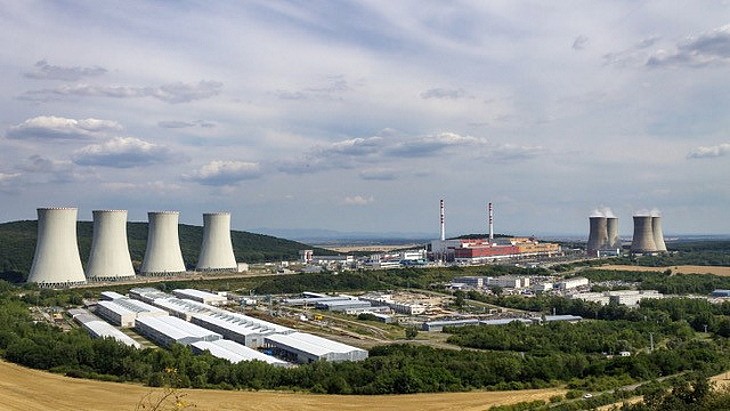In May 2024, the Slovak government formally approved the construction of a new 1.2 GW nuclear reactor at the Bohunice site. South Korea, the United States, and France were identified as potential technology partners. The initiative aims to strengthen national energy security and gradually reduce dependence on Russian nuclear fuel.

(Image: Slovenské elektrárne)
In June 2025, Slovak Prime Minister Robert Fico stated that Slovakia was close to finalizing an intergovernmental agreement with the US for Westinghouse to build a new 1,250 MW reactor. Commissioning is expected before 2040. The investment is estimated between €10 and €15 billion (approx. USD 12–15 billion). The European Commission has already approved the draft agreement, a prerequisite for formal bilateral arrangements.
Slovakia currently operates five Russian-designed VVER-440 units—two at Bohunice and three at Mochovce—making the country a net electricity exporter since 2023.
Mochovce-3 was connected to the grid in 2023, and Mochovce-4 is undergoing hot testing with commissioning expected in 2025. According to the IEA, nuclear power already provides 60–63% of Slovakia’s electricity and is a key pillar in its decarbonization pathway. The agency emphasized the need for a long-term strategy covering fuel supply, operations, and the exploration of small modular reactors (SMRs) for industrial heating and emissions reductions.
To diversify its nuclear fuel supply, Slovenské elektrárne signed a framework agreement in 2023 with Westinghouse for VVER-compatible fuel and began working with France’s Framatome on fuel development.
In July 2025, Slovakia finalized a contract with Urenco to supply enriched uranium for Bohunice and Mochovce until the mid-2030s, marking significant progress in moving away from Russian sources.
In parallel, Slovakia is exploring advanced and small modular reactor technologies. In 2024, the country signed a memorandum of understanding with Synthos Green Energy (a Polish joint venture) to assess deployment of the GE Vernova Hitachi BWRX-300, a 300 MWe SMR.
France’s Newcleo signed agreements with Slovak entities JAVYS and VUJE to deploy up to four LFR-AS-200 lead-cooled fast reactors at the decommissioned Bohunice V1 site, potentially forming part of a closed fuel cycle strategy.
However, the project has sparked domestic criticism due to the lack of an open tender process. Opposition parties have raised concerns over transparency and competition. The IEA has also urged Slovakia to pass climate legislation, establish a 2050 net-zero target, and accelerate permitting to ensure timely energy investment and transition.
Summary
US technology takes the lead: Slovakia is likely to partner with Westinghouse to build a 1,250 MW unit, boosting energy security and nuclear capacity.
Fuel supply diversification: Westinghouse and Urenco will supply VVER-compatible fuel, reducing dependency on Russian-origin materials.
SMRs and advanced reactors in focus: BWRX-300 and Newcleo’s LFR designs are being explored as complementary technologies for mid-term deployment.
Governance challenges remain: Lack of competitive bidding has drawn criticism; stronger regulation and strategic clarity are needed to ensure public trust and EU compliance.
Slovakia’s nuclear expansion reflects not only a structural shift in its energy mix but also a strategic realignment of Central Europe’s energy posture. Its experience may offer lessons for other countries navigating a similar transition.